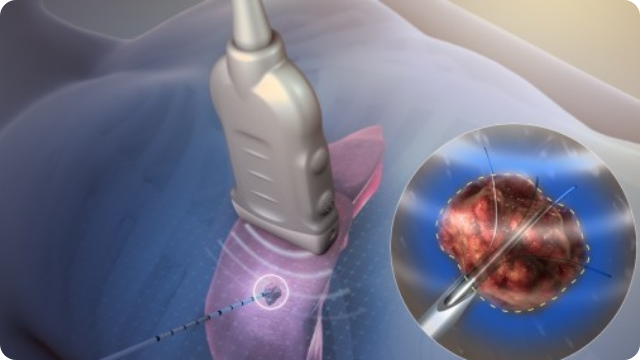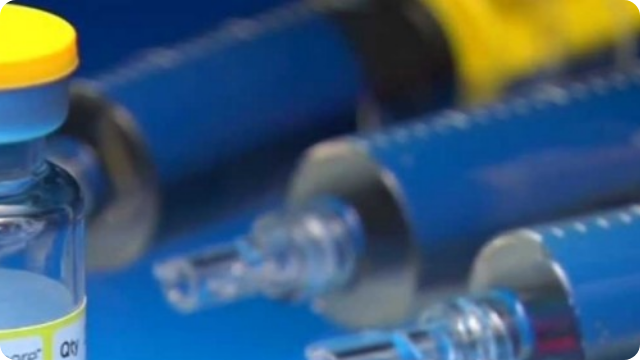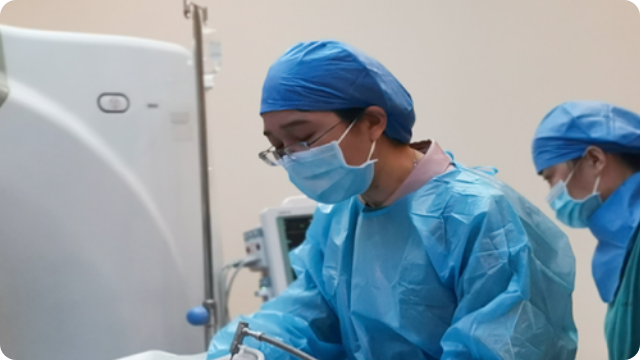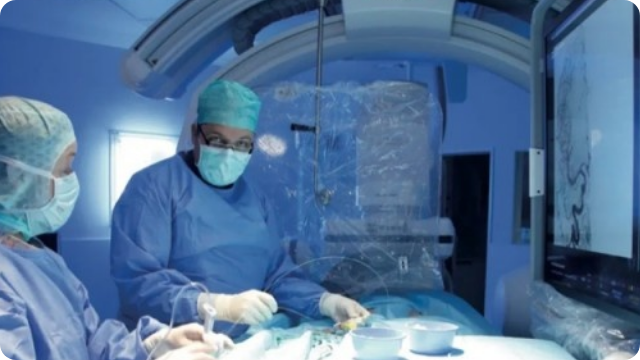
So can middle and late-staged lung cancer be treated? The minimally invasive technique with less side effects and less trauma can help lung patients avoid surgical resection, avoid the pain of traditional radiotherapy and chemotherapy, effectively prolong the survival period and improve the quality of life.
 Surgical treatment
Surgical treatment
Surgery to remove cancerous tissue and clean cervical lymph nodes that may have metastasis.
 Radiation Therapy
Radiation Therapy
Radiation therapy for follicular adenocarcinoma.
 Chemotherapy
Chemotherapy
Often used as palliative therapy for inoperable or distantly metastatic advanced cancer.
 Chinese treatment
Chinese treatment
Traditional Chinese medicine therapy can inhibit the development of cancer, improve the immune function of patients with thyroid cancer, and reduce the toxic and side effects of radiotherapy and chemotherapy.
1. Nanoknife Technology
Nanoknife is a brand-new cutting-edge ablation technology for tumor treatment. It breaks the membrane of tumor cells with high voltage pulses from electrode probes, resulting in multiple irreversible nano-meter electroporated holes, which is applicable to pancreatic cancer.

2. Radiofrequency Ablation
Radiofrequency ablation, sometimes referred to as RFA, is a minimally invasive treatment for cancer. It is an image-guided technique that heats and destroys cancer cells. Under the guidance of image, RFA, a physical method to inactive and kill the tumor, is performed with minima.

3. DEB-TACE
Drug-eluting beads transcatheter arterial chemoembolization (DEB-TACE) is an interventional therapy used in tumor treatment. It is a tiny sphere made of polymers or ceramics with a certain range of sizes and with anti-tumor drugs encapsulated inside.

4. Particle Knife
Particle knife (also called 125I Seed Implants) is applied to a variety of primary and metastatic tumors nowadays. 125I seeds are some small iodine radioactive particles that can give off short-range γ-ray to kill tumor cells continuously.

5. Combined Knife
Combined Knife, it’s not actual surgical knife, but a composite cryogenic freezing surgical system, which conduct cold and heat ablation treatment with liquid-nitrogen by one or more ablation needles.

6. Cryotherapy
Cryotherapy, also named cryosurgery therapy or cryoablation, is a medical technique both ancient and modern.

7. Interventional Therapy
Interventional therapy is a mini-invasive therapy performed under the guidance of medical imaging equipments. With a 1-2 millimeter incision, paracentesis can be performed with the lead of medical imaging equipment.

08.6568.4479